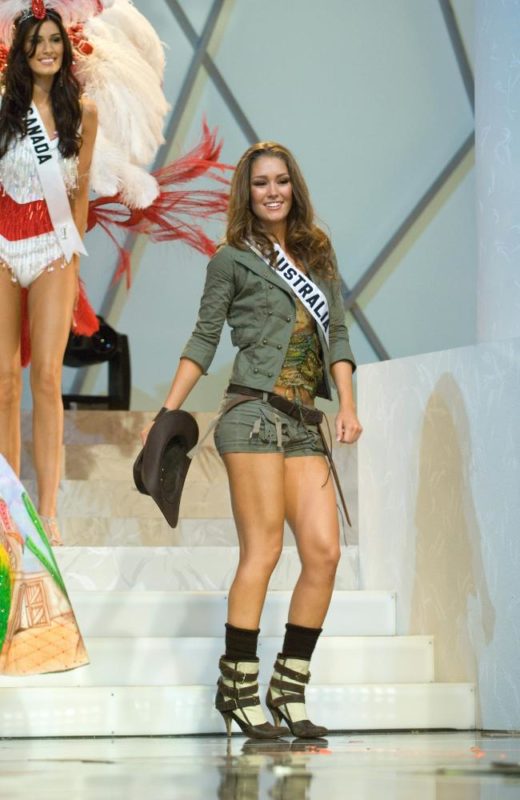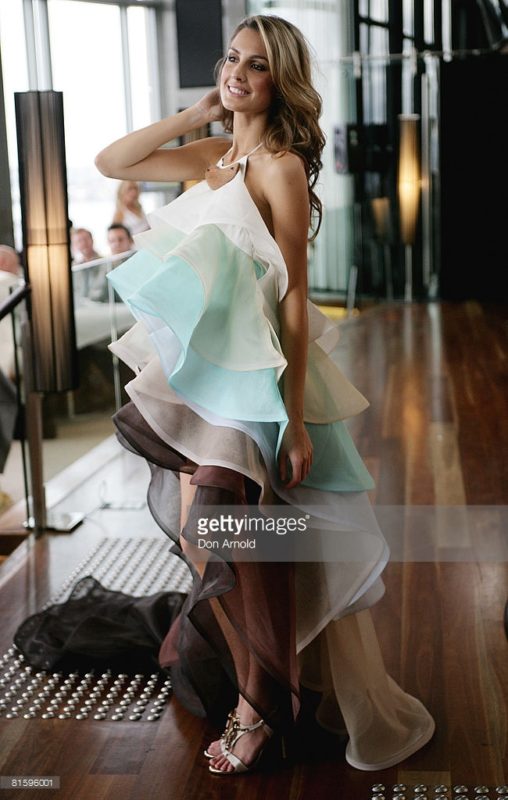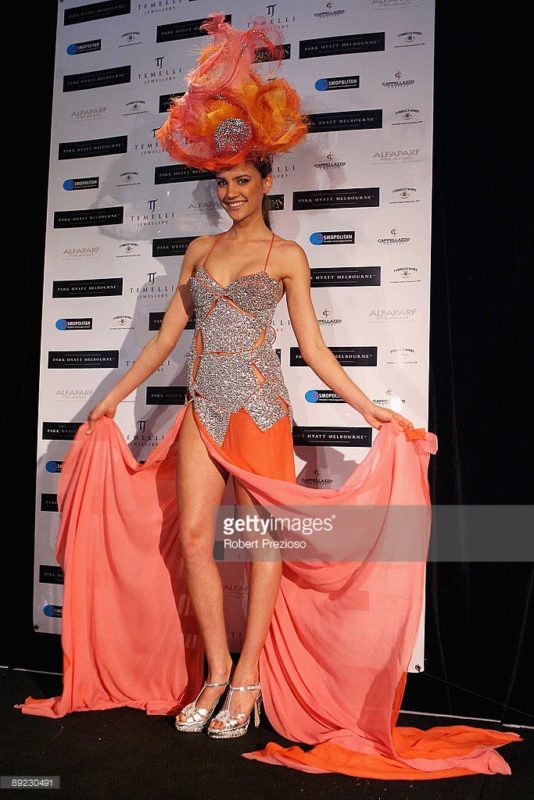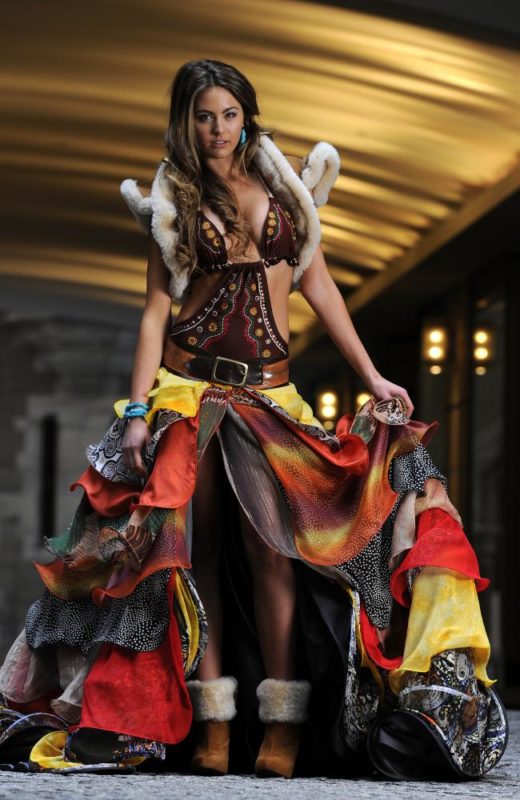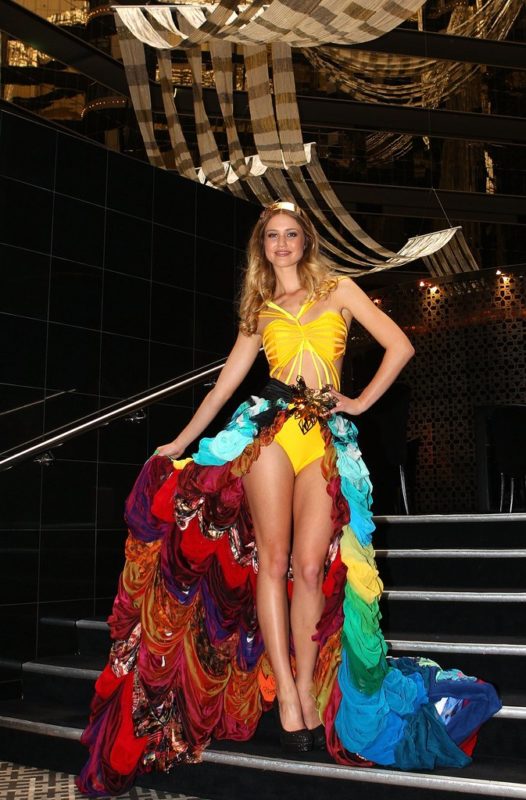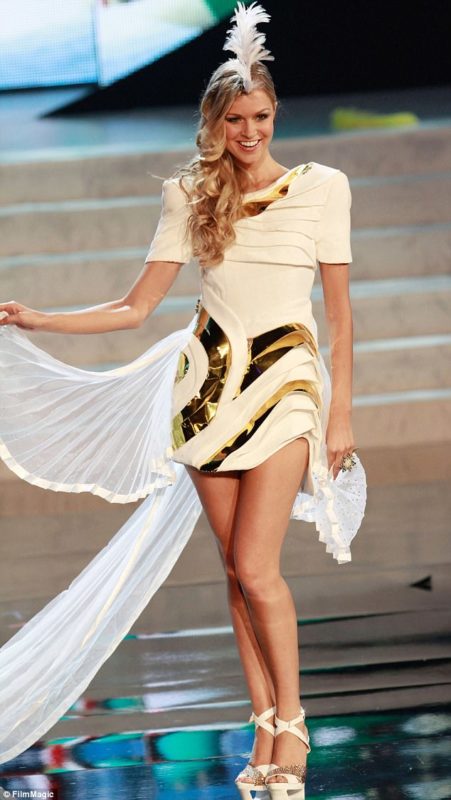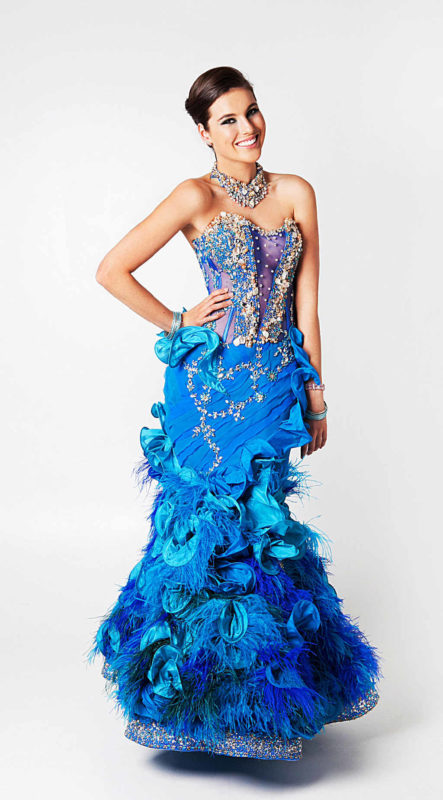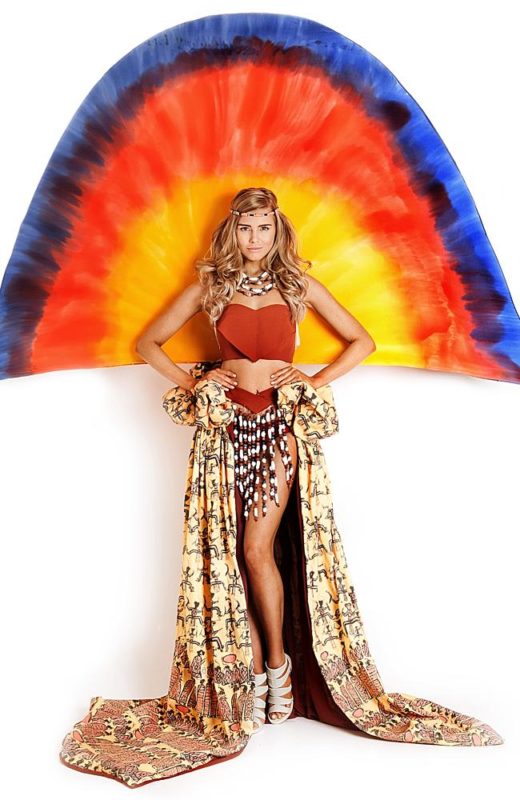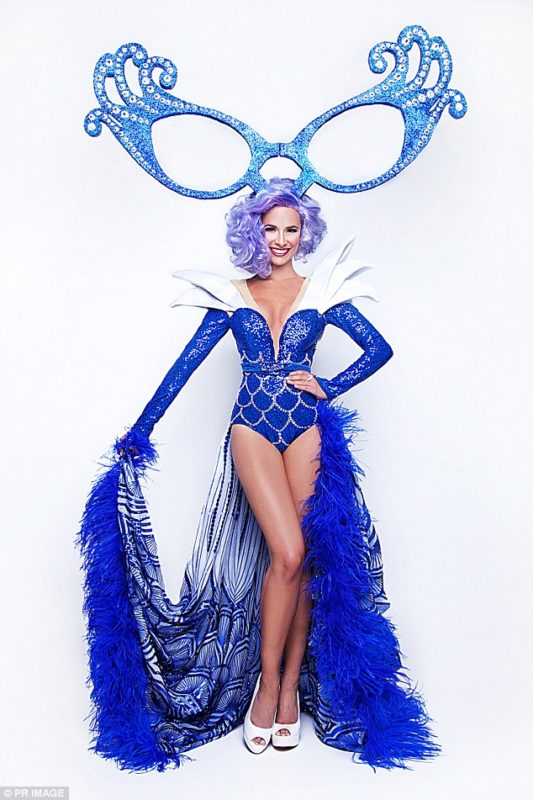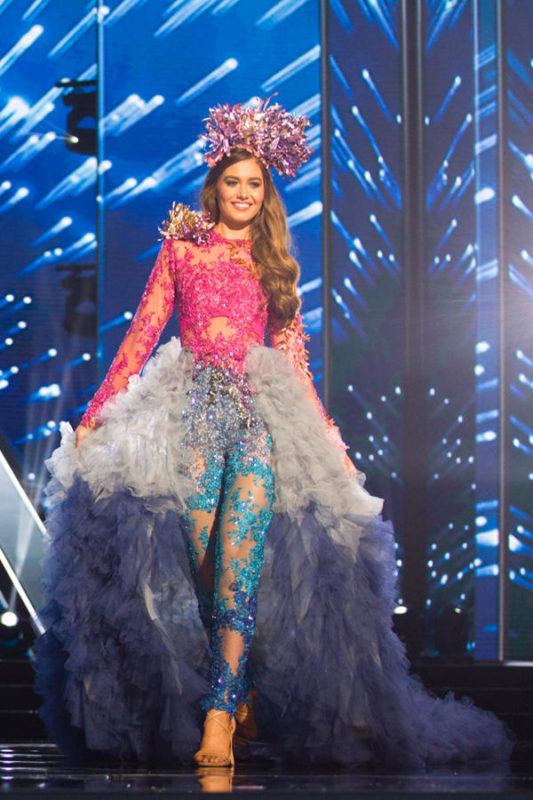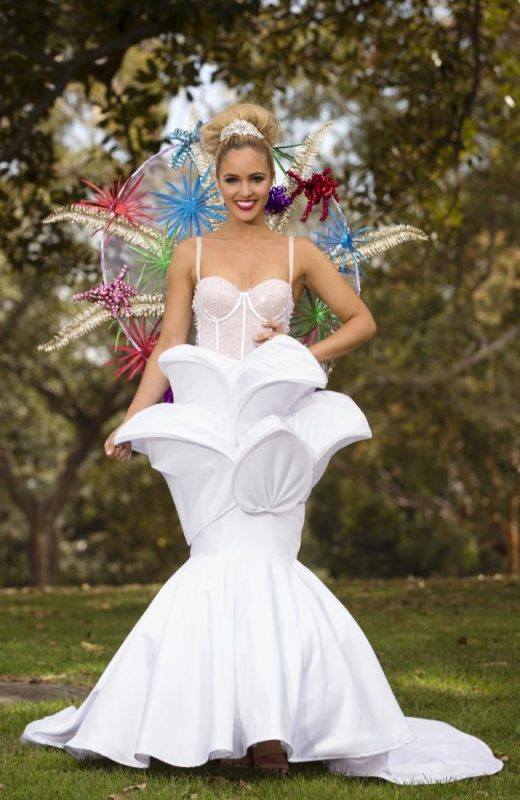Miss Universe has wrapped up in Las Vegas for another year, leaving us just enough time to consider our next move. As one of the big four beauty pageants in the world, it airs to a mammoth half a billion people annually and boasts the involvement of over 190 countries worldwide. Outside of the sporting arena, it presents an opportunity for the world to show off their national identity and creative vision. Here in Australia, a proudly multi-cultural society with no historical costume per se, the task of defining that identity has always been a tentative issue. Each year, designers face the gauntlet to mixed results and my own 2012 contribution was no exception. Lets take a look back at Miss Australia’s journey over the past decade.
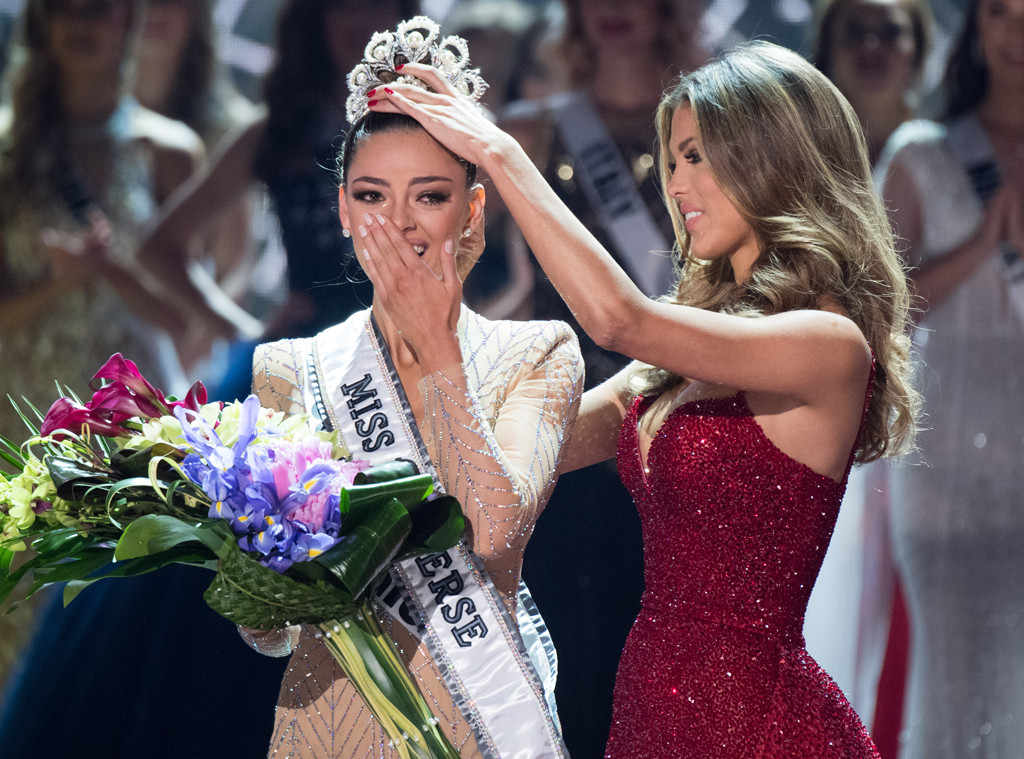
Accepting the 2017 crown and title was South African beauty Demi-Leigh Nel-Peters. Steve Harvey reprised his role as host of the live event after notoriously botching the 2015 announcement, thankfully this year want off without a hitch. Australia’s hopes were pinned on Olivia Rogers, a 25 year old speech pathologist hailing from Adelaide. Forgivably, the South-Australian failed to secure a place in the top 16 among the tight competition. Unfortunately, that meant we were denied the opportunity to unveil the national costume for Australia as planned.
This year’s design was inspired by the Sydney Opera House. The outfit would have literally lit up the stage, according to News.com the dress was equipped with two LED projectors and over 500 individual lights to recreate the same atmosphere of Vivid – Sydney’s Festival of Lights. The dress debuted on the Today Show alongside the designer Begitta Stolk. Begitta started her eponymous label that specialised in couture bridal and red carpet gowns at the young age of 23 after she rose to public attention as a finalist in the Australian National Retail Awards. The design was impeccably executed, featuring a crystalised bodice, the architectural shell of the Sydney Opera house and was backed by a ring of fireworks.
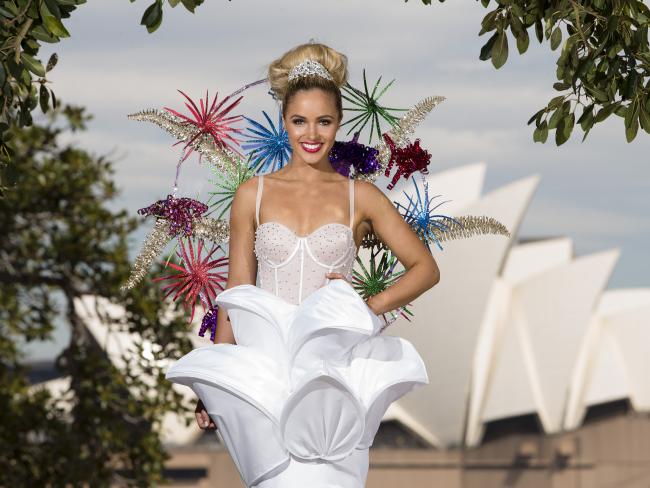
Like every year before, the design has come under fire to mixed results. The national costume has become a sport for national debate and that’s all part of the fun! And we SHOULD talk about identity in a safe creative space, the ideas put forward are meant to encapsulate a nation as much as a flag or anthem – but to a much lighter context. Here we can put forward ideas or shut them down without the risk of mutiny to the crown.
Fresh out of design school in 2011, I had managed to land myself a coveted internship with a reputable Luxury Australian Label. Keen to utilise my skills further, I came upon the 2012 Face of Australia National Costume Competition. It was a new idea, hosted by Sunrise to equalise the designer field and open up opportunities for new blood. Of the four designs selected, mine was voted in on a live television event by the Australian public. What followed was a whirlwind juncture to Las Vegas, to meet with the Miss Australia unit, which included the evening gown designer Craig Braybrook, the Face of Australia Pit Crew and the friends and family of Perth’s Renae Ayris. Renae’s poise and beauty secured Australia a very respectable fourth place. Although the Australian crowd was thin on the ground the atmosphere was electric and not one I will forget soon.
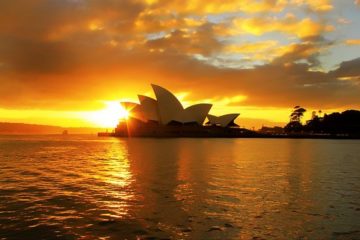
Growing up in Australia, I resonated with the idea of a national identity that recognised Australia as the golden country. I incorporated gold foiling onto a exoskeleton of white scales that were symbolic of the Sydney Opera House, whilst my styling was a nod to the native Cockatoo. The Australian public sat on the fence with parties acknowledging for and against the execution of my ideas. Namely, the lack of signifiers specific to Aboriginal culture and the idea that a building situated in Sydney was limiting the boundaries of a nationwide ideal. Whilst holding the highest respect for Aboriginal Culture, my design did lack specific reference to their important role in the Australian Identity, my approach was to perform an overarching emotion for all Australians that was appreciative for our state in the world. The Sydney Opera House continues to feature as a theme over the years of the National Costume for its global significance. Not only is it recognisably Australian, it is also only one of two examples of Australia’s world heritage listed buildings. Therefore the Architectural vision by Danish designer Jorn Utzon, reflects Australia’s ability to accept and secure a unique visionary landscape with a global appeal.
12 YEARS OF MISS AUSTRALIA NATIONAL COSTUME
Over the past 12 years of Miss Universe, Australia’s National Costume designers have managed to encapsulate collectively what I consider a broad representation of what it means to be Australian. United we have covered beach culture; Aboriginal dream time; architectural and natural marvels from the Sydney Opera House to the environmental distress of the Great Barrier Reef. Even our National Icons – both bushman and larrikin were covered with the Great Dame Edna getting an oversized look on the world of Universal Pageants. In the upcoming years I’d like to see some inclusion of Australia’s minority groups in symbolic form and even in the diversity of the models we put forth, but I am willing to keep an open-mind for what is to come.
As we approach Australia day, I’d like to ask what encapsulates the Australian Identity for you?

